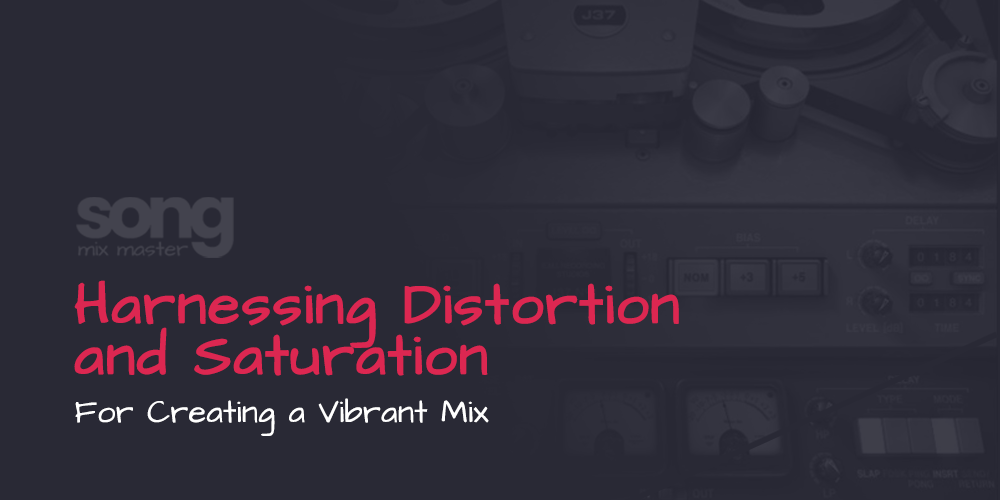Mixing
Harnessing Distortion and Saturation for Vibrant Mixes
A touch of distortion and saturation can be the difference between a flat and uninspiring mix and one that leaps out of your speakers with dimension and energy.
In my view, the concept of distortion is often misunderstood and underutilized in the context of mixing. For some reason, there are many “purists” who categorize various techniques and equipment as either “good” or “bad,” often based on technical rather than artistic considerations.
To these individuals, distortion is often perceived as something that is “bad.” So, if you have some reservations about the topic, I don’t blame you. However, I want to change your perception.
Distortion occurs, and it has been a part of audio history. In fact, it’s one of the reasons why we love what we hear. Have you ever heard about engineers who appreciate the sound that tubes impart to their signal? Or those who enjoy the warmth of a two-inch tape? What they’re describing is the distortion they enjoy hearing.
Controlled saturation or subtle distortion can sometimes be applied to certain frequency ranges to introduce harmonics and warmth, adding perceived brightness without causing harshness.
Also read: Analog Vs. Digital Summing – Uncovering The Audio Debate
Distortion can be thought of as an enrichment of harmonics!
Harmonics are the components of a sound that define its timbre. They are what make the same note sound different on a piano, a guitar, and a trumpet.
By using distortion as an enhancer, we can highlight instrument characteristics to play within a psychoacoustic framework. This allows us to make the bass sound rich even on small speakers, such as those on a cell phone, for example. Or we can extend the decay perception of a reverb without increasing the volume.
We can achieve different dimensions and textures with various forms of distortion. Try using different saturations and distortions on individual tracks, subgroups, and your master fader. Often, the equalization and compression needed afterward will be more creative, meaning less corrective.
In the upcoming blog posts, I’ll share some ways I use distortion in my mixes and how a touch of audio saturation at each stage achieves cohesion among all the tracks in the mix.
Read here How Audio Saturation Can Improve Your Mixes
I also recommend subscribing to the Song Mix Master for more mixing, mastering, and production tips and tools. As a token of appreciation, I’ll provide you with a drum sample library I’ve worked on during many productions, which I believe will enhance your sound.
If you need us to mix or master a song for you, upload your audio files and get a completely free demo.


Disclaimer: Any references to any brands on this website/webpage, including reference to products, trademarks, brands and companies, are provided for description purposes only. We don't have any association with or endorsement by these brands or companies. Some of the links on our blog may be affiliate links. This means if you click on these links and make a purchase, we may earn a commission at no extra cost to you.
Check Out My New Fabfilter Pro-Q3 Presets Pack!
You may also like to read...
Best Reference VST Plugins for Comparison (A/B Plugins)
Harnessing the Power of White Noise in Audio Production
Top 21 Acoustic Guitar Songs to Improve Your Playing Skills
Best Tips & Techniques For Soft Clipping in Mixing and Mastering
5 Common Mistakes to Avoid in DIY Audio Mixing and Mastering
My Ultimate Vocal Mixing Chain With Waves Plugins
Book My Mixing & Mastering Services